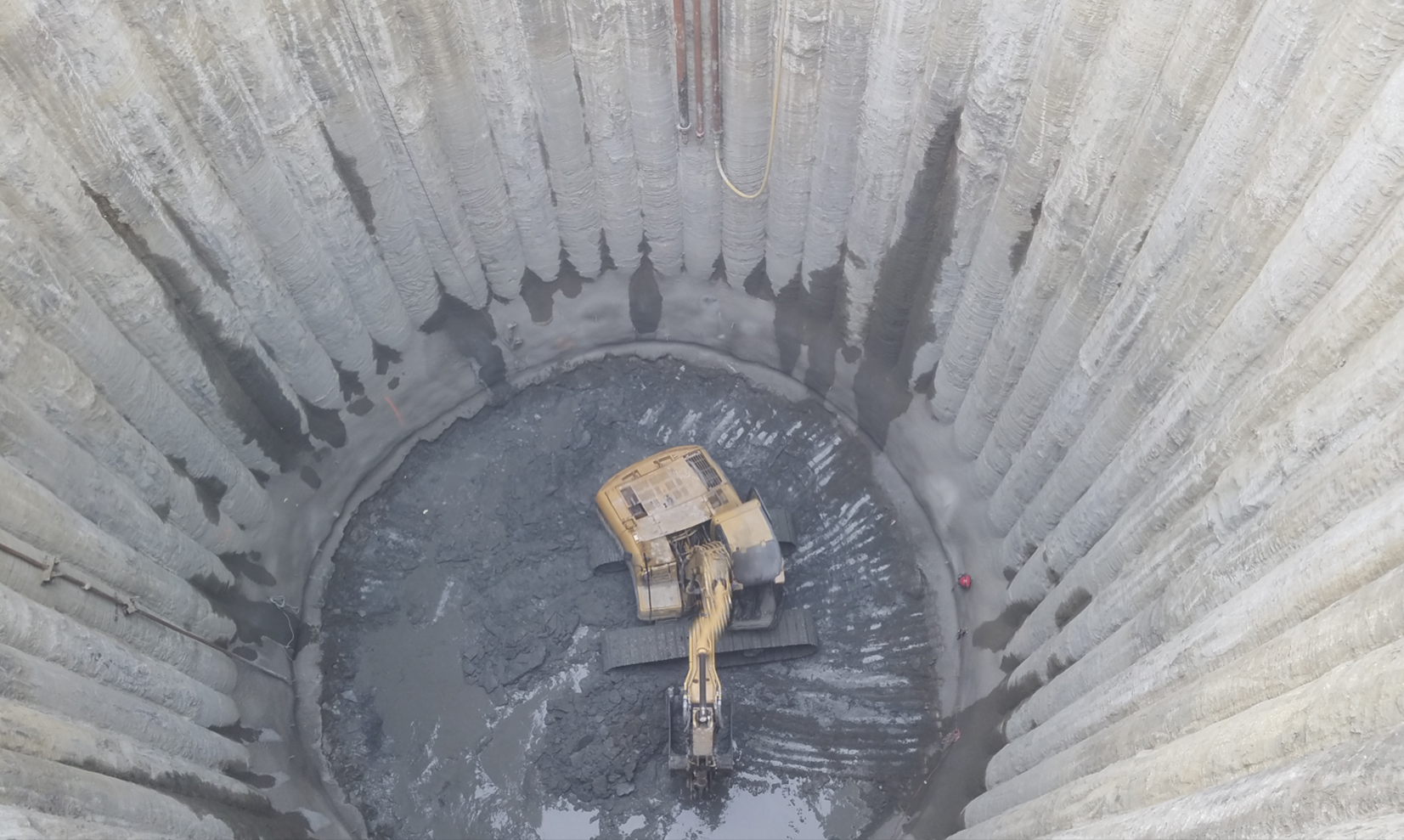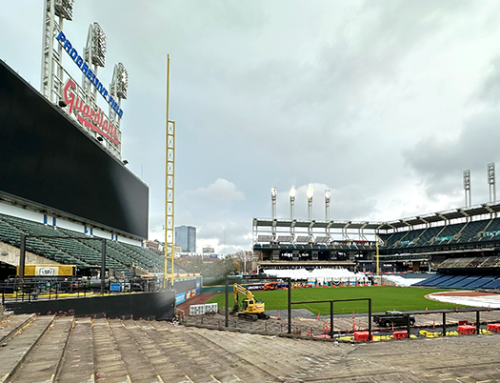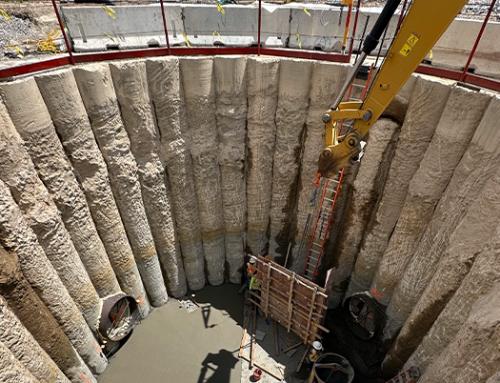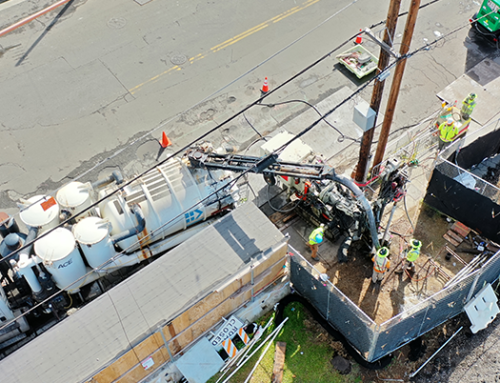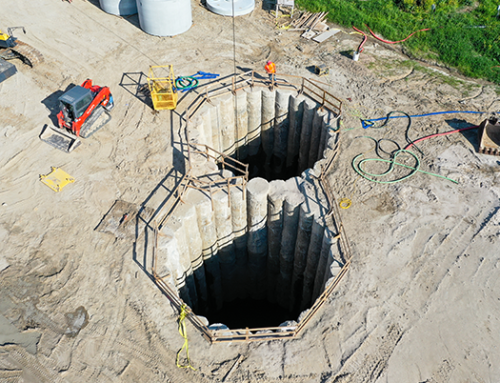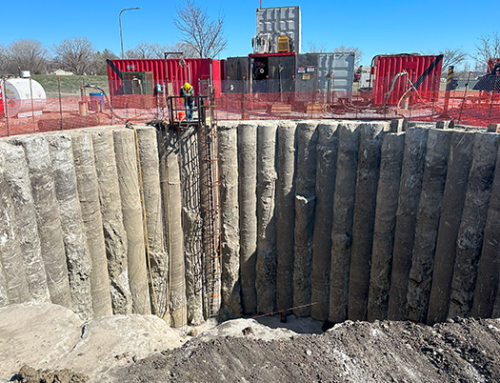Ohio Canal Interceptor Tunnel | Ohio
City: Akron
State: Ohio
General Contractor: Kenny Construction
SCOPE OF WORK:
In 2016, Schnabel performed jet grouting and secant piles for a tunneling project in Northern Ohio. Schnabel’s scope on the Ohio Canal Interceptor Tunnel (OCIT) project consisted of two circular secant pile access shafts and one jet grout block to facilitate the Tunnel Boring Machine (TBM) launch.
BACKGROUND INFORMATION:
The purpose of the tunnel is to divert the combined sanitary/storm sewer in Akron during flood events in order to prevent the overflow of sewage into rivers and streams. This project was being enforced due to an EPA mandate, many of which are occurring in major cities around the country with older infrastructure. The deep tunnel and shafts will be used to temporarily store water and sewage until the overflow event subsides, allowing for what is stored to be pumped out afterwards. The tunnel in Akron is up to 190’ deep.
SECANT PILES:
The circular access shafts were constructed with overlapping secant piles, filled with unreinforced concrete, and were extended ten feet into rock. The access shafts were 46’ and 51’ in diameter, and were drilled 67’ and 49’ deep, respectively. At both locations, the shafts were extended into rock below the secant piles to the tunnel invert, in some cases up to 100’ further. A custom-made spoil box was utilized to contain wet drill spoils being removed from the piles. This not only made for easier cleanup but more importantly a much safer working bench. Due to the wet spoils and small working space, a concrete pad was also poured to act as a working bench, allowing for easier tracking of the 225,000lb+ drill rig in addition to making it easier to clean off water/spoils from the bench. In extremely tight spaces a pump truck was used to place the structural concrete in the piles.
JET GROUTING:
The jet grout block was 50’ x 40’ x 40’ deep, and served as the starting block for the TBM to help minimize ground loss. Five-foot diameter jet grout columns were made by injecting cement under extremely high pressure (6,000 psi) into the ground under constant rotation and lift rate. This was performed utilizing a rented SM-20 Soilmec drill rig which could drill single-stroke up to 64’ deep. The jet grout columns achieved an average strength of 950 psi, mixing neat cement grout with the in-situ soil. A high level of quality control consisted of mud balance readings on both grout and spoils, compressive strength and permeability testing on wet grab cylinders cast on site, and instrumentation reports from the jetting which recorded grout pressure, grout flow, rotation speed and lift rate. The tunneling operations just got underway in October of 2017, with a 30’ diameter TBM capable of drilling through both soil and rock starting to bore through the ground. A full diameter opening was made into Schnabel’s jet grout block, exposing the jetted material and confirming the uniformity of the jet grout process. Later in 2018, the TBM is expected to intersect the two access shafts.
CONCLUSION:
A series of overlapping, unreinforced secant piles were installed in a circular ring pattern to provide the lateral earth support for the shaft through the overburden soils and upper portion of the bedrock. The secant piles were installed approximately 67’ deep through fill, silts and sands below the water table, and toed into 10’+ of shale and sandstone bedrock. A SonicCaliper, Schnabel’s laser device and the Jean Lutz Prad system were all used to confirm the verticality of each shaft.
